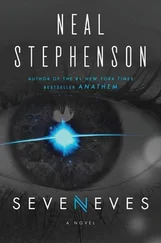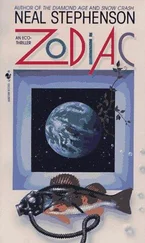“The point is,” said Don Donald, “that it works . Put a magic gem in a story and it grabs the reader. This can be done shamelessly, or with more or less artfulness, according to the tastes and talents of the author. I should say that Tolkien got it right by layering atop it a story about good and evil. The numinous mineral object is now also a technology; it has been imbued with power by a sentient will who possesses some sort of arcane wizardry. It can only be unmade by exposing it to a certain geological process that, being geological, is prior to, and takes precedence over, any work of culture.”
Don Donald was clearly accustomed to addressing people whose only way of responding was to nod worshipfully and take notes. He did not, in other words, leave a lot of breaks in his testimony to allow for discussion. For the moment, that was fine, since it made it easier for Richard to drink.
“If I have correctly understood your company and its technology, you possess a command of the geological underpinnings of your world that far exceeds that of any competitor. It would seem the natural and obvious step, then, to capitalize on this, by creating, or providing a facility for the creation of, numinous objects of mineral origin.”
“NOMOs,” coined Pluto.
D-squared looked taken aback until he got it.
Richard put in: “Among geeks, the cool-soundingness of the acronym is more important than the existence of what it refers to.”
“I might then be of service,” said D-squared, “by erecting a cultural (ahem) story atop that geological basement. The cultures would have artisans, metallurgists, gemologists, and so forth who would create the—er—NOMOs that would presumably be of central importance to the game.”
“I was thinking about the formation of the moon the other day,” Pluto put in.
“Pluto, would you care to expand on what you just said, since we do not understand it?” Richard asked.
“There’s a theory that the moon was made when young Earth got sideswiped by something huge, almost planet sized. We don’t know where that thing went.” He shrugged. “It’s kind of weird. You’d think that if we got hit by something big enough to knock the moon off, it would still be around somewhere, orbiting the sun. But I was thinking: what if it fell back into Earth later and merged with it?”
“What if it did?” Richard asked.
“It would be a very strange situation,” Pluto said. He pointed out the window of the restaurant, up into the sky. “A piece of Earth is up there. Sundered. Separated forever. Not coming back.” Then he lowered his aim and pointed down at the floor. “While down inside the earth is alien stuff. Stuff that doesn’t belong. The residue of the thing that hit us and sundered the world.”
Richard had been worried that D-squared would find Pluto incomprehensible and that the entire interview would be one long series of excruciating faux pas. But, perhaps because Cameron lived and dined with Premier League nerds at Cambridge, he seemed perfectly at ease with the shaggy Alaskan demiurge. He was either fascinated by Pluto’s idea, or putting forth a commendable effort to feign fascination, and it didn’t matter which. “Is it your idea that this alien planetesimal remains intact and hidden below the surface?”
“Way deep down, a big chunk of it might be intact,” Pluto said, “but some of it would have been melted and carried away by magma flows. But not dissolved. It would manifest on the surface of T’Rain as veins of special ores and so on.”
“Of course!” said Don Donald. “And the cultures that arose on the planet’s surface, knowing nothing of the geological facts, would come to recognize the special properties of these ores, whatever they might be.”
“If the physics of the planetesimal were different, like because it came through a wormhole from another universe or something, then that would provide a basis for what we call magic,” said Pluto, “and the metallurgists, or whatever, who learned how to exploit it would become alchemists, brewers of potions, sorcerers—”
“And they would get busy manufacturing lots of NOMOs,” Richard put in, just in case anyone was losing sight of this. Because he had played enough games to know that NOMOs equaled valuable virtual property which equaled cash flow for Corporation 9592. “I think my work here is done,” he said, rising to his feet by the always-safe drunken expedient of leaning against a wall as he straightened his legs. “I shall leave you two to work out the details.”
Not for the first time, the future survival and prosperity of the company was secured by Pluto’s memory. After talking to D-squared for another couple of hours, he went home and wrote it all down in an emacs document entitled “it.txt,” which was later transmogrified into “it.docx” and thereby founded a lineage of more discursive documents and wiki pages, and a project and then a department that were all called “it” until one of the professional managers who had begun to infiltrate the company raised her eyebrows and it all had to be renamed Narrative Dynamics. The first major initiative of which had been to hire Devin Skraelin.
The gist of “it,” as Richard only found out much later (he was a big believer in delegating responsibilities to people who actually cared about them), was that the T’Rainian biosphere supported two distinct types of DNA, one made exclusively out of original T’Rain elements, the other commingled with trace amounts of stuff from the swallowed planetesimal and therefore imbued with “magic,” where “magic” was now a social construct invented by T’Rain’s sentient races to explain the different physics that governed the alien atoms. Some species were made entirely of the mundane DNA, some were hybridized with a bit of the alien stuff, and a very few were made of 100 percent alien material and consequently had angelic/demonic/godlike qualities, though these had trouble reproducing since it was difficult to round up a sufficient biomass of the right kind of stuff.
Of course. it was way more complicated than this made it sound; and it wasn’t long before tables and tree diagrams had to drawn up to keep it all straight, but this was the gist of it.docx, which, in its fully fledged, nine-point-seven-megabyte incarnation, they had handed off to Devin when they had made him the first, and the last, Writer in Residence.
“HOW’S ZULA DOING?” Richard asked, trying to get a conversation started with Pluto. They were over the High Plains now and he supposed that his traveling companion might have less to gaze at.
“I haven’t seen her in a few days,” Pluto said, without taking his eyes off the window. Perhaps his attention had been seized by the meanderings of the Platte.
So that gambit had failed. Richard considered his options. Other people would want to sentimentalize about the old days, but the great thing about traveling with Pluto was that he only cared about you to the extent that you were interesting to him now . In that way he kept you on your toes. No aspect of the relationship could be counterfeited when it was being minted anew from moment to moment.
“I meant,” Richard said, “how’s she doing in the job?”
“As best as anyone can given the nature of the problem,” Pluto said, finally glancing Richard’s way for a fraction of a second.
During the Titanian phase of the game’s development, when they had been laying down great slabs of world and story from one day to the next, Richard had pushed Pluto, hard, to supply them with material even before it was “ready,” which, for Pluto, meant that every cubic millimeter of solid matter in the world had to have a detailed backstory stretching 4.5 billion years. Pluto’s diligence in this and other matters had become a bottleneck delaying millions of dollars’ worth of efforts by other contributors. Richard had demanded that Pluto supply maps stipulating the locations of certain ore veins and gem deposits by fiat. In a thirteen-hour meeting, the memory of which still sent palpable horrors running up and down Pluto’s spine, Richard had stood at a whiteboard drawing out maps of the mineral deposits by hand. Photographs of the whiteboard had then been used to generate the actual maps used in the game. Much of Pluto’s work since then had been in the newly created discipline of Teleological Tectonics, meaning that he started with Richard’s maps and then ran the tectonics and the magma flow simulations backward in time so that everything could be knit together into a lava narrative that made sense by Pluto’s lights. This project had perked along in the background for several years and only recently got to the place where serious computing resources could be thrown at it. That job had fallen to Zula. “The nature of the problem” was Pluto petulantly reminding Richard that Richard had been the originator of said problem.
Читать дальше





